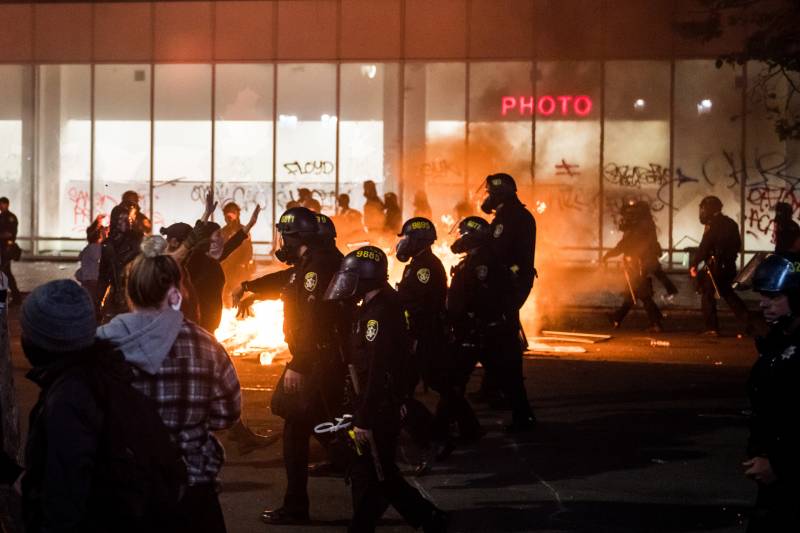The Oakland Police Department has come under increasing scrutiny from city officials, civil rights lawyers and even public health experts for shooting tear gas and rubber bullets into crowds during recent protests ignited by the Minneapolis police killing of George Floyd.
In a letter Wednesday, civil rights attorneys James Chanin and Rachel Lederman said that Oakland police violated its own crowd-control policies and that its actions were “precipitous, excessive and endangered innocent people.”
Lederman and Chanin took particular issue with the use of tear gas at a Monday night protest around City Hall that was characterized as largely peaceful.
“The policy specifies that ... crowd control chemical agents shall be used only if other techniques, such as encirclement and multiple simultaneous arrest or police formations have failed,” Lederman and Chanin wrote.
